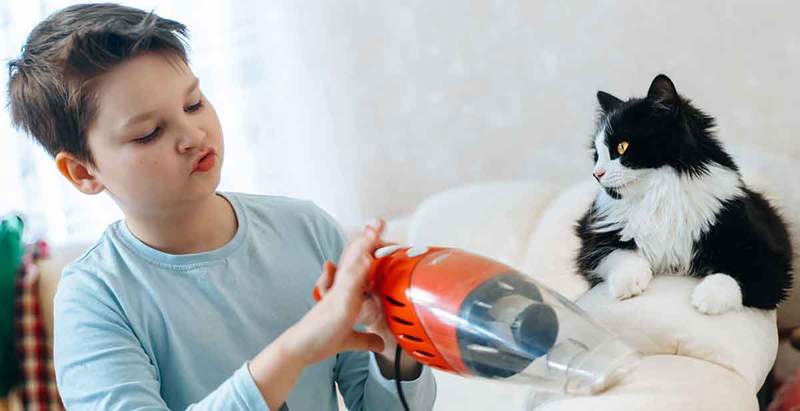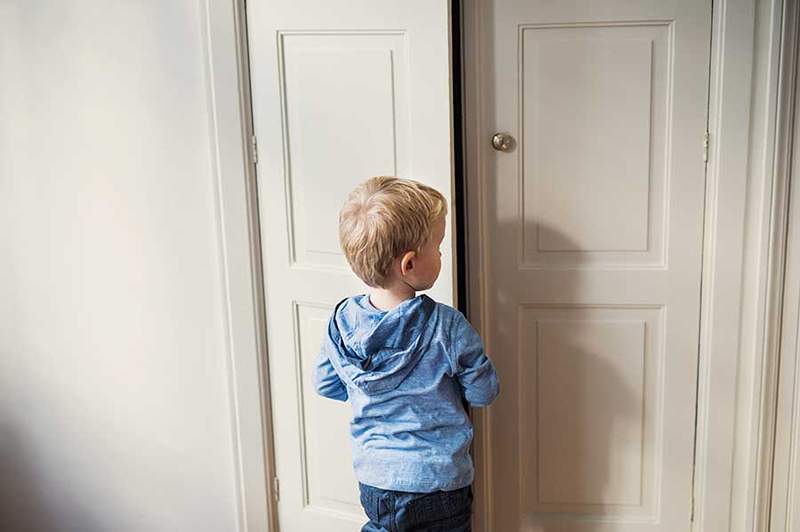CHILDREN WITH TOC SYMPTOMS AND TREATMENT

- 4240
- 701
- Jeffery Jones
Children with OCD (obsessive-compulsive disorder) fight daily with obsessions, compulsions, or both. It is normal that, to some extent, children have doubts and concerns, however, Children with TOC do not stop worrying, no matter how much they try, and those concerns force them to behave in a certain way.
Content
Toggle- CHARACTERS OF TOC in childhood
- Most common symptoms
- How to diagnose Toc in children
- Therapeutic plan
- Bibliography
CHARACTERS OF TOC in childhood
Toc is a disease whose origin is heterogeneous and affects 1 % of children and adolescents.
This disease is characterized by obsessive thoughts and compulsive behaviors, which cause anguish to children and alter their daily lives. Many times, children with TOCs also live with other comorbidities, such as attention alterations, mood, learning, or tics.
Before the 1980s, OCD was considered an exclusively emotional, or neurotic disorder, which was rare in these ages, so it did not have specific treatments guidelines. However, currently none of those statements can be considered, then, Today the TOC is considered differently to other anxiety disorders, Although the symptom is present in who suffers from it since it is an anxiety that derives from the existence of intrusive thoughts, obsessions, and impulses, or compulsions.
According to pediatrician Paz González Rodríguez, in his study on obsessive-compulsive disorder in childhood, “observations regarding their association with various neurological disorders have meant an incentive to identify the neural circuits involved in the implementation and maintenance of compulsive obsessive behaviors ".
The author also notes that a dysfunction of the frontal basal ganglia has been confirmed, through neuroimaging, as well as the involvement of neurotransmitter systems, especially serotonergic.
Likewise, genetic studies have been carried out that show a greater risk of suffering from the disease in children of parents with OCD, up to 16%, or in relatives of the first grade, in 10%.
At present, it seems commonly accepted, that Toc does not seem to arise due to main psychological factors, but by predisposing biological factors, in combination with other psychological factors of education, as well as trumatic unleashed events. This seems to be the most successful explanation about the origin, development and maintenance of this disorder in children.
Most common symptoms
Children with TOCs can experience some symptoms, such as obsessions and compulsions, which come to interfere with their daily lives, to the point of changing their character and behavior. This makes School and social life is difficult for them. Well, these obsessions and compulsions are perceived as exaggerated by the environment, but they cannot avoid them.
A obsession It is a disturbing, repetitive, unwanted and unpleasant thought, which appears repeatedly and uncontrollable in the minds of children with Toc. This causes them a high level of anxiety and fear. For example when thinking continuously if we have closed the bath tap.
According to the compulsion, This is a behavior that is carried out in the form of a ritual for longer than normal, also repetitively and uninterruptedly, for example, washing your hands excessively.

Children with TOCs resort to compulsions in the attempt to reduce the anxiety generated by the obsessive idea.
Children with TOC are trapped in an unpleasant and disturbing thoughts scheme, or for repetitive and ritual behaviors that they fail to control and try to hide it or justify with minimizing reasoning.
This is precisely one of the reasons why it is difficult to identify the disorder in its first moments of appearance, in addition to being scarce among the population.
However, A large number of adults recognize starting to suffer the symptoms in childhood or adolescence. The most frequent symptoms in children with TOCs are obsessions related to the fear of contaminating, accompanied by a compulsion of washing their hands and avoiding contaminated objects. In the same way, the concern about the safety of their parents, or of themselves is also frequent.
Some of the common symptoms is the repeated compulsion of Check, for example, if family members are safe or if the doors are closed.
There is also a pattern of obsessive thinking in which Children with TOC fear having hurt someone's feelings, or feel Fear of running over a pet with his bicycle. Some children with OCS also fear assaulting someone, due to lack of control.
Other frequent compulsions are Remove or play repeatedly. Many do until they feel that "it's fine". Children with TOC can also go up and down the stairs, or go from front to back.
Another example of the symptoms of children with TOC is include actions with the right and then with the left, or repeat actions a number of times odd or pair.
The compulsion of rewrite or reread school tasks, which ends by interfering with its academic performance. Among the mental rituals, the repetition, a silent prayer, thinking or counting something repeatedly, among others, among others.
 TOC in people who perform actions slowly: main characteristics and treatment
TOC in people who perform actions slowly: main characteristics and treatment How to diagnose Toc in children
But, Unlike adults, Children with OCD often fail to explain the consequences that can occur if they do not do repetitions in rituals, but they only perceive a vague sensation that something bad can happen. On many occasions, children vehemently ask their parents for certain demands, in order to turn them into “assistants” of their rituals, and can be irritated if their parents do not access cooperation, which can disturb life daily family.
In certain cases, the TOC in children becomes diagnosed from a medical problem such as, for example, Hand injuries due to compulsive washing, enuresis for rejection of going to the bathroom, Due to obsessive thoughts on pollution, or lacerations in gums due to excessive brushing.
Therapeutic plan
The treatment for children with TOC includes cognitive-behavioral therapy, as well as medication with serotonin reuptake inhibitors. The choice of drugs will depend on the characteristics of children and parents' preferences.
It is also important that parents can access appropriate information to help children in the daily management of the condition. Information to parents and children, added to the above, offers good possibilities for improvement. It should also be taken into account that The punishments for symptoms must be avoided And, rather, you must understand the suffering of the child, without having to submit to the demands for participation in the rituals.
The Wechsler Intelligence Scale for Children-IV (WISC-IV)
Bibliography
- Delgado, j. R., Martín, i. D., & de Luna, C. B. (2003). Obsessive compulsive disorder in childhood. Primary Care Pediatrics Magazine, 5(19), 53-60.
- Dorronsoro Martín, I., Luna Bonet, C., & Rodríguez Delgado, J. (2003). Obsessive compulsive disorder in childhood. Primary Care Pediatrics Magazine, 5(19), 415-422.
- Falcón, f., Lazar, c., & Garcia, C. S. (2012). The role of parents in cognitive-social treatment of obsessive-compulsive disorder in childhood: about a case. Psychosomatic Medicine Notebooks and Link Psychiatry, (102), 8.
- Gonzales p. Rodríguez p. Obsessive-compulsive disorder in childhood.

